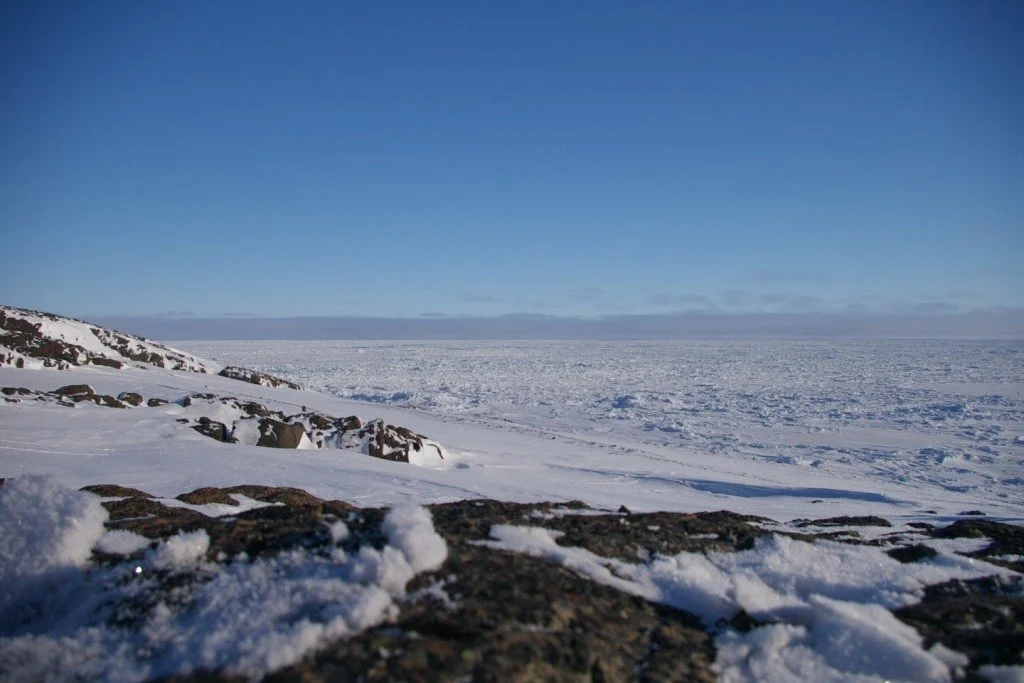
Tuvaq - Landfast ice
Indigenous Knowledge
Tuvaq ᑐᕙᖅ / Sikutuqaq ᓯᑯᑐᖃᖅ
'ᑕᒪᓐᓇ ᓯᑯ ᐃᔾᔪᓯᓯᒪᓕᖅᑎᓪᓗᒍ ᑐᕙᕐᒥᒃ ᑕᐃᔭᐅᓲᖅ; ᒫᓐᓇᒫᒃᑰᓕᖅᑐᖅ ᑐᕙᖅ
ᐃᔾᔪᓯᓗᐊᖅᐸᒍᓐᓃᖅᑐᖅ ᑭᖑᓂᒋᐊᑦᑎᓐᓂ ᐃᔾᔪᓯᓂᖅᓴᐅᕙᔪᑎᓪᓗᒍ.
Tamanna siku ijjusisimaliqtillugu tuvarmik taijausuuq; maannamaakkuuliqtuq tuvaq ijjusiluaqpagunniiqtuq kingunigiattinni ijjusiniqsauvajutillugu.
Solid, landfast ice that is older than siku (i.e. later in the season, typically thicker more stable ice); in recent years tuvaq does not get as thick as it used to in the past.'
(Kinngait, South Qikiqtaaluk, Kinngait Sea Ice Glossary 2023: 34)
Tuvak
'[...] landfast ice that stays frozen in the bay and coastal areas and becomes solid ice attached to the shorelines.' (Nunavimmiutitut, Voices from the Bay, MacDonald et al. 1997: 15)
Western Knowledge
Fast ice
'(Banquise côtière [fr]): Sea ice which forms and remains fast along the coast, where it is attached to the shore, to an ice wall, to an ice front, between shoals or grounded icebergs. Vertical fluctuations may be observed during changes of sealevel. Fast ice may be formed in situ from sea water or by freezing of floating ice of any age to the shore, and it may extend a few metres or several hundred kilometres from the coast. Fast ice may be more than one year old and may then be prefixed with the appropriate age category (old, secondyear, or multiyear). If it is thicker than about 2 m above sealevel it is called an ice shelf.' (WMO)
Profile photo credite: Joel Heath
.svg)